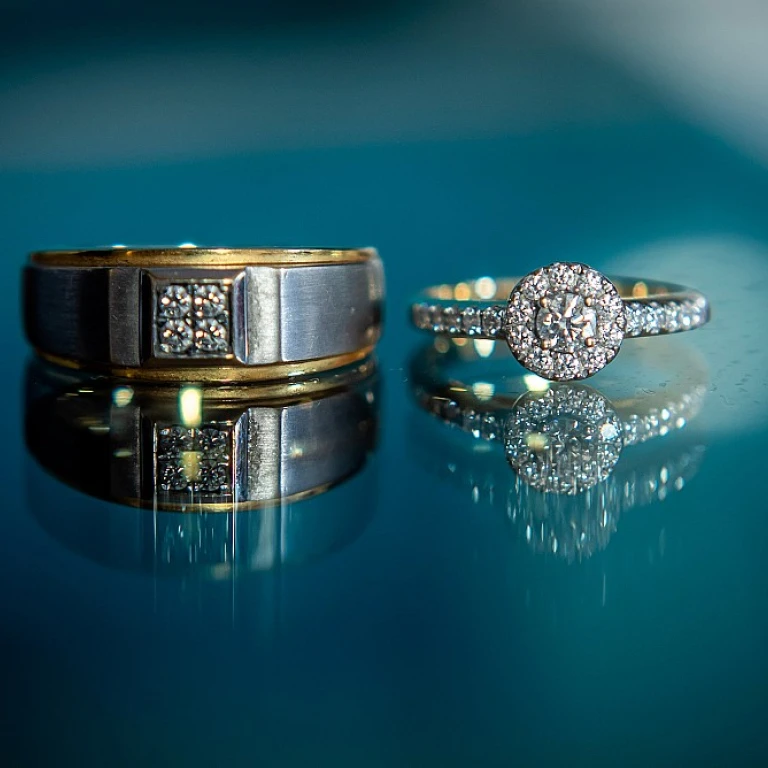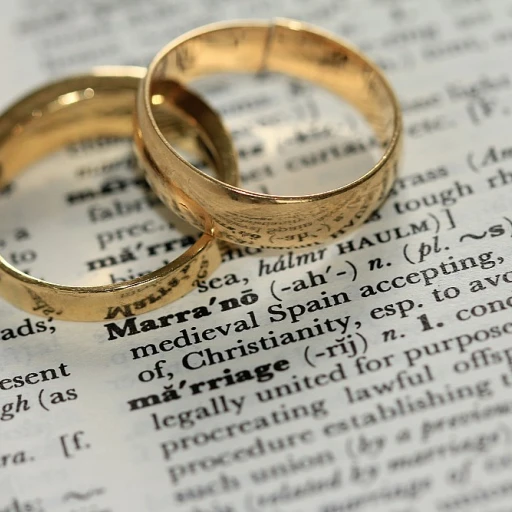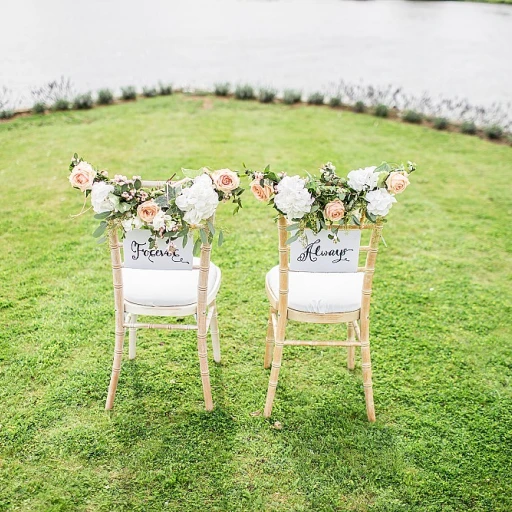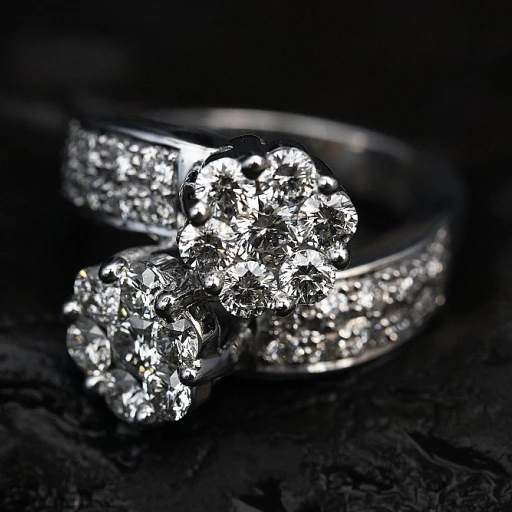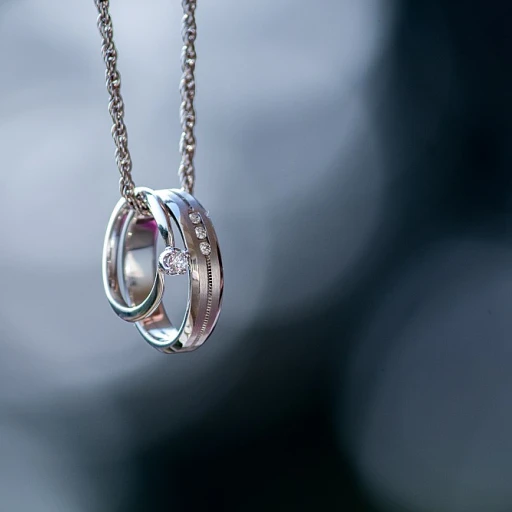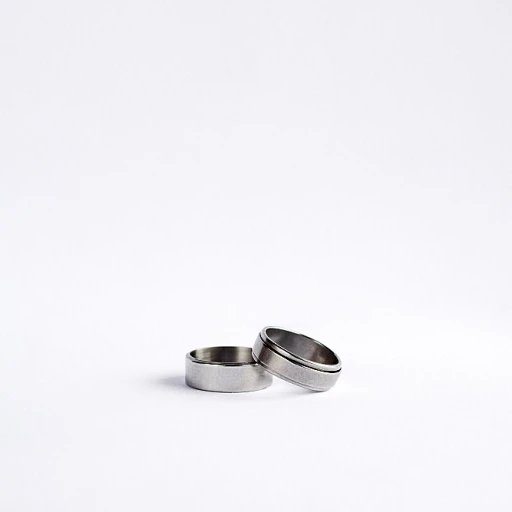Understanding the Basics of Wedding Ring Sizing
Grasping the Fundamentals of Ring Sizing for Your Special Day
Embarking on the journey toward matrimonial bliss begins with an essential step – ensuring the perfect fit of your wedding band. A symbol of eternal love, your wedding ring should sit comfortably on your finger, encapsulating both beauty and comfort. Understanding the basics of wedding ring sizing is paramount. It is estimated that a significant number of future spouses require resizing after the proposal – an indicator of the importance of precision in selecting the right size.
Deciphering the Sizing Chart: A Key to the Perfect Fit
Wedding ring sizes vary globally, with countries following different measurement norms such as numerical, alphabetical, or scale-based systems. For clarity and convenience, refer to universally recognized sizing charts that convert measurements into a standard format. Visual guides and online references are excellent resources for familiarizing yourself with these charts.
Statistics show that the average ring size fluctuates between size 5 to 7 for women and 8 to 10.5 for men, providing you with a baseline for your sizing considerations. However, personalization is crucial, as every individual's sizing needs are unique.
Embracing the Importance of a Precise Fit
A wedding ring that fits perfectly should slide over your knuckle with relative ease but should be snug enough not to spin or slide off without effort. A common concern highlighted in various studies is the impact of weather on finger size – with cold causing shrinking and heat prompting expansion. This underscores why a comprehensive fitting, considering seasonal changes, is fundamental to avoid discomfort or, worse, loss of your cherished ring.
The Role of Professional Sizers.
For those seeking accuracy and confidence in their wedding ring size, consulting with a professional jeweler is invaluable. These experts use specialized tools like ring sizers – a series of metal rings in graduated sizes – to find the ideal match for your finger. Coupled with their experience, professional jewelers will ensure a seamless marriage between your ring and your finger.
In the context of online shopping, which garners approximately 10% of the jewelry market, per recent business reports, utilising online sizers or requesting a ring sizing kit from the retailer can provide assurance for a successful remote purchase.
Measuring Up: How to Determine Your Ring Size Accurately
The Step-by-Step Process to Discover Your Perfect Ring Fit
Finding the perfect fit for your wedding ring is critical for both comfort and security. The journey towards pinpointing your ideal ring size should be approached with accuracy and care. Start by measuring your finger at the end of the day when it is at its largest. Use a string or paper strip and wrap it around the base of your finger, mark the point where it overlaps, then measure it against a ruler. This method, while simplistic, can provide you with an initial understanding of your ring size. For greater precision, a professional jeweler's sizing tool is recommended.
Tips for Accurate Ring Size Measurement at Home
- Ensure your fingers are at normal body temperature – fingers can shrink or expand when cold or hot.
- Avoid measuring fingers when they are swollen or after exercise.
- Measure your finger three to four times for consistency and accuracy.
- If your knuckle is particularly large, measure both the knuckle and the base of your finger, and choose a size in between.
Statistics show that the most common ring size for women ranges from size 6 to size 7, while the average for men spans from 8 to 10-1/2, according to a study by The Knot. Yet, individual comfort should always take precedence over averages.
Utilizing Professional Ring Sizers for Best Results
For those seeking confidence in their wedding ring size, visiting a jeweler or utilizing a professional ring sizing kit is indispensable. These kits often include a set of rings in various sizes, which you can try on to identify the size that best suits your finger. Always seek advice from jewelers who typically recommend that the ring should fit snugly on your finger; it should slide on easily but take a bit more effort to come off, ensuring it won't slip off accidentally.
"The difference between a ring that fits and one that doesn't can be the difference between a ring you wear daily and one that sits in the drawer," emphasizes Megan Young, a renowned jewelry expert.
A survey from The Jewelry Industry Research Institute reported that over 35% of ring buyers have required resizing after purchase, emphasizing the importance of getting the size right the first time. By engaging with professionals, you decrease the chances of resizing, saving you both time and potential costs.
The Timing and Cost Factors: When and How Much Should You Budget for Ring Sizing?
Optimal Timing for Wedding Ring Resizing
When planning your dream wedding, timing is everything, especially concerning your wedding bands. A recent survey by The Knot reveals that couples should start considering wedding ring options at least three months before the wedding. This allows ample time for you to not only find the perfect ring but also to ensure proper sizing. If you're keen on getting the perfect fit, it's advisable to schedule your final fitting close to the wedding date. This is because finger sizes can fluctuate due to temperature, diet, and other factors.
Smart Budgeting for Ring Sizing
Budgeting for your wedding rings goes beyond the initial purchase price. The cost of sizing a wedding ring can range anywhere from $20 to $150 or more, depending on complexity. If your chosen bands have intricate designs or embedded stones, expect the higher end of the pricing spectrum. It's crucial to consider these potential extra costs upfront. Some jewelers offer a one-time complimentary resizing within the first year of purchase—something to ask about when making your selection.
- Simple resize (silver, gold, platinum): $20 - $60
- Complex resize (embedded stones, engravings): $50 - $150+
- Premium materials (titanium, tungsten): Additional costs may apply
Investing in the Right Ring Sizing Service
Don't just opt for the cheapest ring sizing option. According to industry experts, a professional and reputable jeweler will not only resize your ring but also ensure that its integrity isn't compromised. This is where references come into play; seek out recommendations or reviews for a reliable service. Remember, investing in a skilled jeweler is investing in the longevity of your most symbolic piece of jewelry.
Discounted and After-Purchase Sizing Options
Some jewelers offer discounts or even free resizing for rings purchased within their stores. As reported by Thumbtack, a marketplace for finding local professionals, you might also come across seasonal promotions or resizing packages that can reduce cost without compromising quality. Look for these deals well in advance so you can budget accordingly.
Beware of hidden costs that can arise with ring resizing. If additional materials are needed or if there's a need for more intricate work due to the design, the price can quickly go up. Insurance might cover resizing, so check your policy. The resizing process might also take a toll on the ring's durability; some metals might weaken if worked on too often. Therefore, it's paramount to factor in not only the immediate cost but also the long-term implications of multiple resizings.
Future-Proofing Your Wedding Ring: Strategies for Anticipating Size Changes
Anticipate and Adapt: Making Your Wedding Band Last a Lifetime
Pondering the fluctuation of your finger size over the years is as important as choosing the right wedding band. As reported by the Jewelers of America, finger sizes can change due to various factors like age, climate, and even lifestyle. It's not just about the “over the knuckle” fit; it's also about future comfort and the enduring symbol of your commitment. Planning for the long-term wear of your precious symbol of love may require incorporating sizing allowances from the outset. This foresight ensures your band remains comfortable and secure through life's many seasons.
Seizing the Right Fit: Selecting Adjustable Options
One strategy for future-proofing your wedding ring is to select a style that can be easily adjusted. According to The Knot's market research, nearly 35% of individuals consider the ability to resize their rings as a key factor. Options such as rings with a sizing bar or those that can be easily stretched by a professional jeweler provide a cushion for future changes. Rings with intricate designs, like eternity bands, can be challenging and costly to resize. Hence, selecting a versatile design initially can save you time and additional expenses down the road.
- Consider rings that provide a sizing bar for easy adjustments
- Opt for simpler designs that can accommodate resizing
- Be wary of full eternity bands or ornate patterns that complicate resizing
Invest in Quality: Understanding Metal Malleability
Different metals react differently to resizing processes; it's a crucial consideration, involving both the durability of the material and the cost implications. For instance, platinum's density makes resizing more labor-intensive, often resulting in higher costs. A study from the GIA (Gemological Institute of America) suggests that softer metals like gold are easier to manipulate, thus more resizing-friendly. A keen understanding of metal properties can prevent future headaches and ensure that resizing, when needed, is a feasible task.
- Platinum is durable but costly to resize
- Gold offers easier manipulation for resizing
- Consider the long-term implications of your metal choice
Navigating Ring Sizing for Custom and Designer Wedding Bands
Ensuring the Perfect Fit for Unique and Bespoke Bands
Embarking on the journey of custom and designer wedding bands introduces a layer of complexity to ring sizing that requires a mindful approach. According to a study by The Knot, "custom-designed rings have surged in popularity," with 45% of engagement rings being customized. This statistic underpins the importance of understanding sizing for these unique pieces. Craftsmanship and details in these rings often mean that resizing could be more costly or even impossible without compromising the design. In such cases, it is essential to start with a precise measurement, perhaps incorporating the techniques discussed earlier in this guide.
Collaborate with Your Jeweler for Sizing Success
Close communication with your jeweler stands paramount, especially when dealing with intricate ring designs. They can provide invaluable guidance on how the materials and construction of your ring will affect sizing options. As quoted by a renowned jeweler, "Every ring tells a story; it’s the jeweler’s responsibility to ensure that narrative continues flawlessly through time." The right jeweler will not only tailor the ring to your exact size but also offer advice for future adjustments. Be sure to discuss the possibility of needing to resize down the line - expert jewelers often leave just enough room within the design to accommodate this without altering the ring's integrity.
Anticipate Lifestyle and Physical Changes
- Consider the long-term: Acknowledge that lifestyle or physical changes may affect ring size over time.
- Plan for adjustments: Choose designs that allow for easy alterations if necessary.
- Material matters: Some materials, like titanium or tungsten, are more challenging to resize, making initial accuracy crucial.
Remember, getting the correct size from the start is vital, as some designer bands cannot be resized easily. Jean Dousset, a third-generation Parisian jeweler, emphasizes, "Precision is the hallmark of luxury." When investing in high-quality materials like platinum, which can require special tools and expertise to alter, precision is not just a luxury but a necessity. Hone in on the right fit by factoring lifestyle changes or weight fluctuation patterns shared in our analytical exploration of this topic previously.
Invest in Quality and Craftsmanship for Longevity
A designer wedding band is not only an adornment but an investment. Jewelry industry statistics show that customers are willing to invest more in pieces that are timeless and of superior quality. Investing in materials and workmanship that stand the test of time ensures that the ring remains alterable, if necessary. Furthermore, seasoned jewelers often provide warranties or services to support the longevity of your ring. Such commitments highlight the sentiment shared by many couples, "Our rings are the symbol of our love, they grow and change with us," reflecting the need for wedding bands that can evolve as your bond does.
Key Takeaway for Custom Ring Sizing
As we have investigated the technical aspects of ring sizing, let's emphasize the essence of this guidance for your bespoke or designer band. The harmony between precise measurements and the allowance for future modifications will ensure your wedding band is as enduring as your love story. Embracing the strategies outlined will help couples like you navigate the sizing process, from 'Yes' to 'I do' and beyond.

